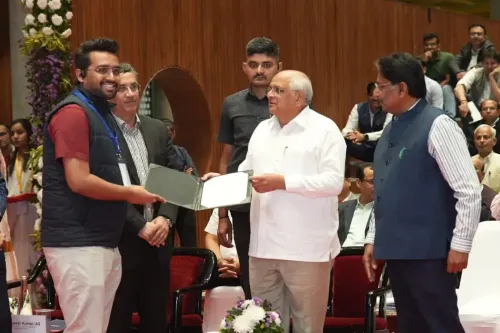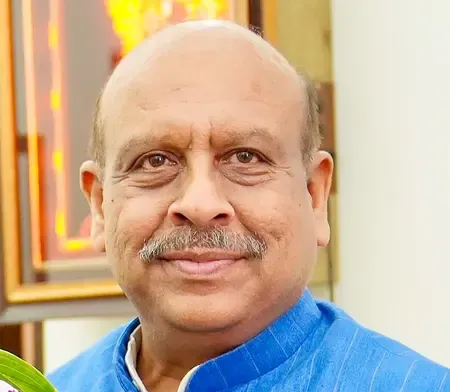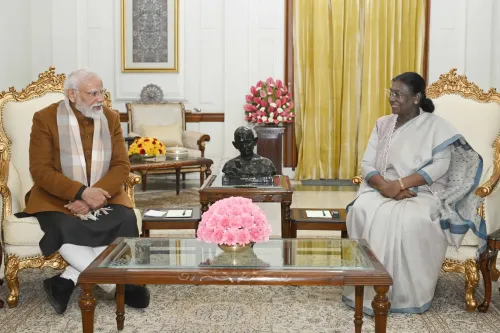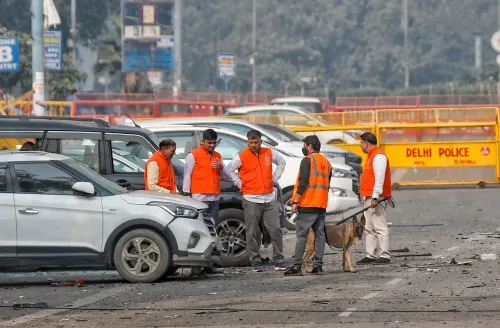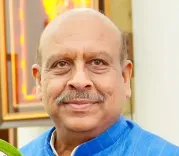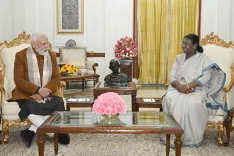What Are the Greetings from HM Shah and Delhi CM Rekha on 'Nahay-Khaay'?
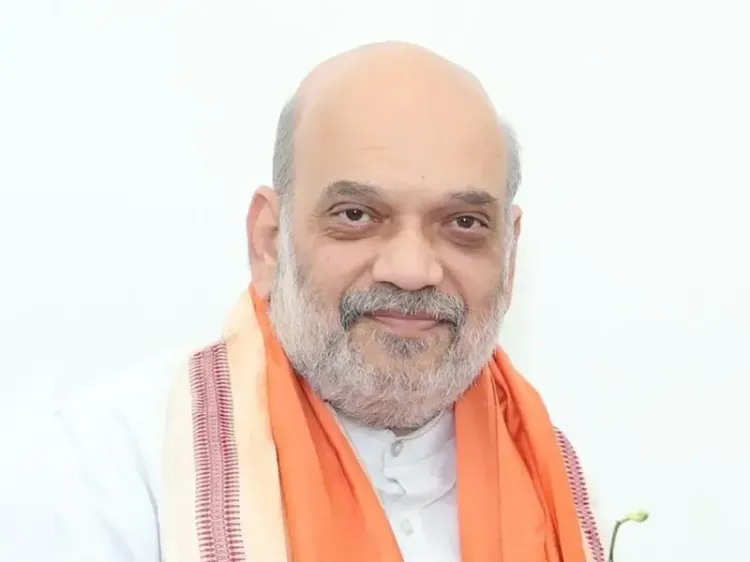
Synopsis
Key Takeaways
- Chhath Puja is a major Hindu festival celebrating the Sun god.
- The festival emphasizes purity, gratitude, and family well-being.
- Rituals include fasting, offerings, and community gatherings.
- Nahay-Khaay marks the festival's commencement, symbolizing cleanliness.
- Chhath Puja fosters social unity and respect for nature.
New Delhi, Oct 25 (NationPress) Union Home Minister Amit Shah and Delhi Chief Minister Rekha Gupta conveyed their heartfelt greetings to the public as they celebrate Nahay-Khaay, which signifies the commencement of Chhath Puja — a festival that represents tradition, faith, and social unity.
On social media platform X, Union Home Minister Amit Shah expressed, “Warm greetings to all on the occasion of 'Nahay-Khaay' of Chhath Puja, a tribute to tradition, faith, and social connection. I pray to Chhathi Maiya for everyone's joy and success.”
Meanwhile, Delhi CM Rekha Gupta shared her own wishes, stating, “Chhath, the magnificent festival dedicated to Sun worship, begins with Nahay-Khaay, embodying purity, discipline, and self-restraint. The cultural heritage of Bihar has inspired a life philosophy through this festival, intertwining nature and faith. On this sacred occasion of Nahay-Khaay, may Chhathi Maiya bless all families with joy, tranquility, and prosperity. May the Sun god illuminate India with his energy, and may this folk tradition guide the nation towards unity, discipline, and self-reliance.”
Chhath Puja ranks as one of the most pivotal Hindu festivals, mostly celebrated in Bihar, Jharkhand, and eastern Uttar Pradesh. It also finds observance in regions of Nepal and among Indian communities globally.
This festival is dedicated to honoring the Sun god and his sister Chhathi Maiya, emphasizing the values of purity, gratitude, and familial well-being.
With origins tracing back to ancient eras of Satyuga and Dwapara Yuga, Chhath Puja is recognized as one of the oldest forms of Sun worship. Participants engage in the festival with rigorous discipline, refraining from food and water for extended periods to show devotion and seek blessings of prosperity, health, and happiness. Worshipping Surya during Chhath is believed to eliminate negativity and usher in peace and positivity.
The four-day celebration involves intricate rituals symbolizing purification, faith, and self-discipline:
Day 1 – Nahai Khai: Devotees commence the festival with a sacred dip in a river or pond to purify themselves. They collect vegetables and pulses, preparing their initial offerings, underscoring cleanliness and sanctity.
Day 2 – Kharna: On this day, devotees engage in a stringent fast from dawn to dusk. They prepare offerings of jaggery, rice, and wheat, breaking their fast in the evening after presenting offerings to the deity. The 'prasad' (ritual food offerings) is shared with family, friends, and neighbors to foster unity and community spirit.
Day 3 – Sandhya Arghya: Devotees gather near water bodies in the evening to offer 'arghya' (prayers and offerings) to the setting Sun. They present fruits, sugarcane, and prasad as an expression of gratitude to the Sun god for sustaining life on Earth.
Day 4 – Usha Arghya: The concluding day is focused on offering prayers to the rising Sun. Devotees break their fast after making offerings, symbolizing renewal and spiritual rebirth. The prasad is distributed among family and community members, marking the end of the rituals.
Chhath Puja is celebrated with simplicity, devotion, and purity. Offerings, including fruits, vegetables, and sweets, embody the gifts of nature, while the practice of fasting and prayers signifies devotees' commitment to purifying their body, mind, and spirit. The core essence of Chhath Puja lies in gratitude, promoting respect for natural resources and the harmonious bond between nature and humanity.


